 History
History  History
History  Technology
Technology Top 10 Everyday Tech Buzzwords That Hide a Darker Past
 Humans
Humans 10 Everyday Human Behaviors That Are Actually Survival Instincts
 Animals
Animals 10 Animals That Humiliated and Harmed Historical Leaders
 History
History 10 Most Influential Protests in Modern History
 Creepy
Creepy 10 More Representations of Death from Myth, Legend, and Folktale
 Technology
Technology 10 Scientific Breakthroughs of 2025 That’ll Change Everything
 Our World
Our World 10 Ways Icelandic Culture Makes Other Countries Look Boring
 Misconceptions
Misconceptions 10 Common Misconceptions About the Victorian Era
 Mysteries
Mysteries 10 Strange Unexplained Mysteries of 2025
 History
History 10 Things You Didn’t Know About the American National Anthem
 Technology
Technology Top 10 Everyday Tech Buzzwords That Hide a Darker Past
 Humans
Humans 10 Everyday Human Behaviors That Are Actually Survival Instincts
Who's Behind Listverse?

Jamie Frater
Head Editor
Jamie founded Listverse due to an insatiable desire to share fascinating, obscure, and bizarre facts. He has been a guest speaker on numerous national radio and television stations and is a five time published author.
More About Us Animals
Animals 10 Animals That Humiliated and Harmed Historical Leaders
 History
History 10 Most Influential Protests in Modern History
 Creepy
Creepy 10 More Representations of Death from Myth, Legend, and Folktale
 Technology
Technology 10 Scientific Breakthroughs of 2025 That’ll Change Everything
 Our World
Our World 10 Ways Icelandic Culture Makes Other Countries Look Boring
 Misconceptions
Misconceptions 10 Common Misconceptions About the Victorian Era
 Mysteries
Mysteries 10 Strange Unexplained Mysteries of 2025
Top 10 Evolutionarily Unique Animals
Using a scientific framework to identify the world’s most Evolutionarily Distinct and Globally Endangered (EDGE) species, the EDGE of Existence programme highlights and protects some of the weirdest and most wonderful species on the planet. This is a list of the top 10.
10. Pygmy hippopotamus

The pygmy hippo is a solitary animal that lives among dense vegetation along streams and swamps and in the rainforests of West Africa. It sometimes lives in cultivated areas, but the pygmy hippo is shy: it avoids people, as well as other hippos. Each hippo has its own territory. The male’s territory is larger than the female’s; both mark their territorial boundaries with their droppings. The pygmy hippo feeds mainly when it is dark. It spends most of the day resting within its territory. It changes resting places once or twice a week.
9. Attenborough’s long-beaked echidna
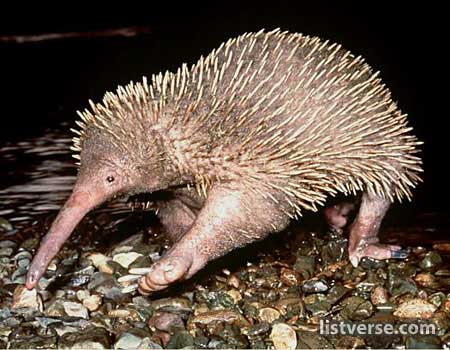
This animal is one of three species from the genus Zaglossus to occur in New Guinea. It is named in honour of Sir David Attenborough. It was considered extinct until recent expeditions have discovered tracks and locals have reported seeing the creature.
8. Bactrian camel
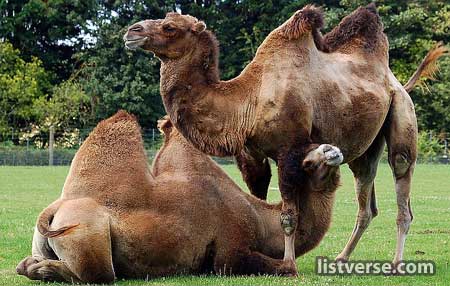
An imposing animal, the Bactrian camel can reach seven feet in height and weigh up to 1,500 pounds. The species’ thick, brown coat changes with the seasons. During winter, it thickens to provide added insulation against the cold while large chunks of fur are shed in the summer to keep the animal cool. Both male and female Bactrian camels have two large humps on their backs. The Bactarian camel is endangered due to loss of habitat.
7. Yangtze River dolphin

This dolphin, also called a Baiji, is a freshwater dolphin found only in the Yangtze River in China. Unfortunately it has already reached the conservation status of Critically endangered – possibly extinct. Fossil records suggest that the dolphin first appeared 25 million years ago and migrated from the Pacific Ocean to the Yangtze River 20 million years ago.
6. Slender loris
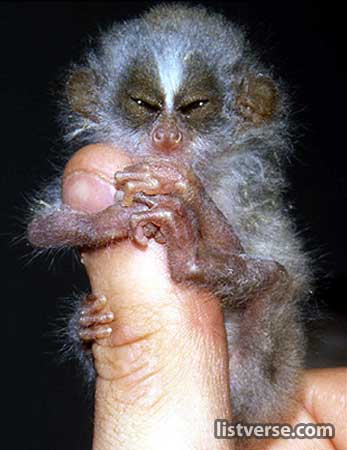
The slender loris is a small, nocturnal primate found only in the tropical rainforests of Southern India and Sri Lanka. They are able to live in wet and dry forests, as well as lowland and highland forests. They prefer thick, thorny vegetation wherein they can easily escape predators and find the large assortment of insects that is the mainstay of their diet. The Indian government has laws protecting the slender loris, but its effect is difficult to gage.
5. Hirola antelope
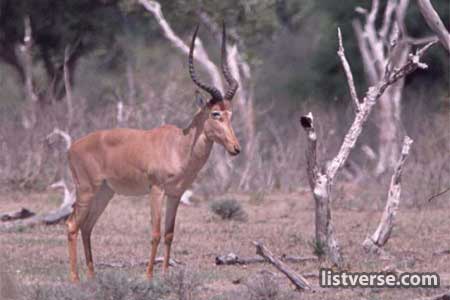
This antelope has recently become very rare, with current censuses reporting fewer than 400 individuals. Only one hirola exists in captivity: an aging female at the Gladys Porter Zoo in Brownsville, Texas. It is a relic species, and only exists today (barely) due to its unique habitat requirements. Another name for this antelope is the “four-eyed antelope”, due to its pronounced, dark-colored preorbital glands, which are enlarged when excited.
4. Bumblebee bat

The Bumblebee bat competes with the Etruscan pygmy shrew for the title of world’s smallest mammal. These bats are so-named since they’re about the size of a bumblebee, weigh about as much as a dime, and have the ability to hover like hummingbirds. Their roosting habitat consists of the hot upper chambers of caves in limestone hills. Bumblebee bats are are now considered one of the twelve most endangered species on the planet.
3. Golden-rumped elephant shrew
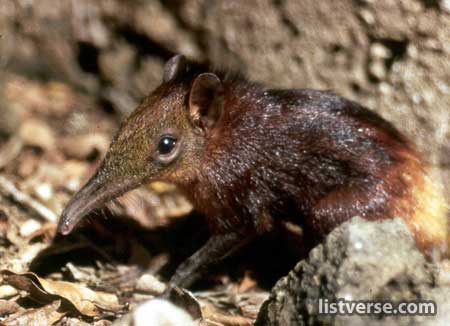
The Golden-rumped elephant shrew is the largest of all the unique African family, the elephant shrews. It is the size of a small rabbit, and is only found in the coastal Arabuko Sokoke National Park north of Mombassa in Kenya. It is classified as endangered because of its highly restricted and fragmented environment; it is also hunted for food and by feral dogs.
2. Hispaniolan solenodon
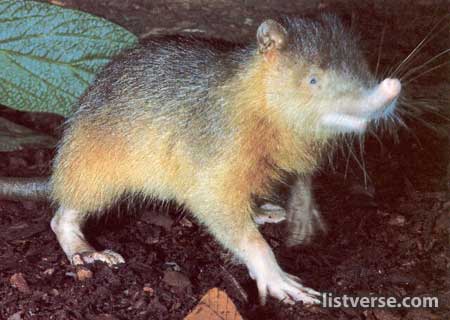
Hispaniolan solenodon, also known as the Haitian Solenodon or Agouta, is a solenodon only found on the island of Hispaniola, shared by Haiti and the Dominican Republic, and was unknown to science until 1833. Currently, the solenodon may only be surviving in only two places in the Dominican Republic: Jaragua and Del Este National Parks and La Visite National Park in neighboring Haiti. Its presence in Los Haitises National Park in the Dominican Republic is inferred but unconfirmed.
1. Long-eared jerboa
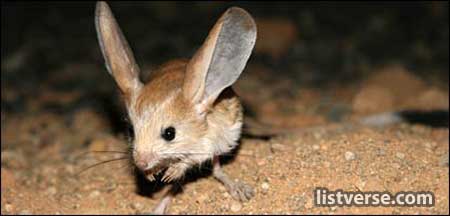
The Long-eared Jerboa, is a nocturnal mouse-like rodent with a long tail, long hind legs for jumping, and exceptionally large ears. It is distinct enough that authorities consider it to be the only member of both its genus, Euchoreutes, and subfamily, Euchoreutinae. In 2007 Zoological Society of London sent a researcher to study human impact on its environment. The study returned with video footage that been noted as the “first time” the creature has been “recorded on camera”. This has helped to start a campaign to protect them.








